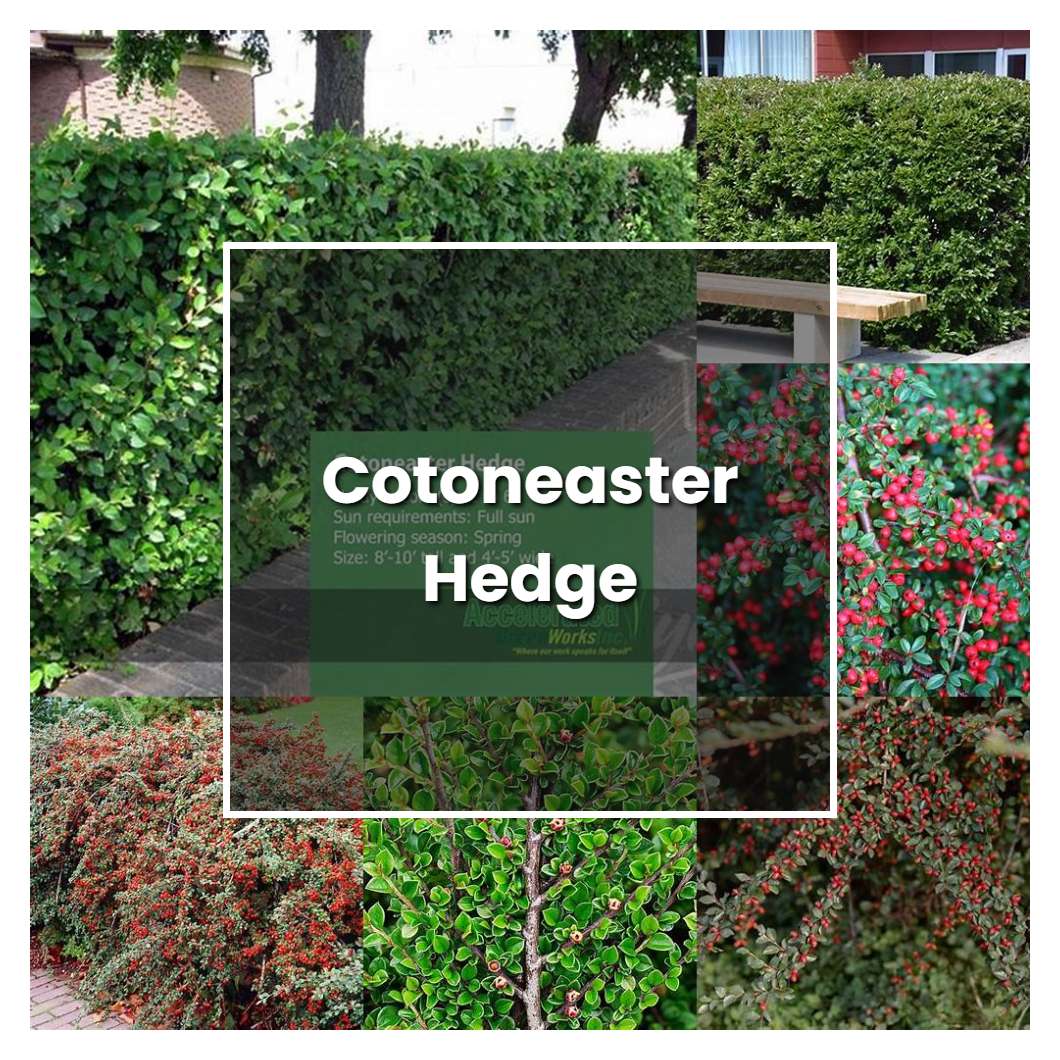Cotoneaster hedge is a plant that is often used as a privacy hedge or as a border in landscapes. It is a fast grower and can reach heights of 6-10 feet. Cotoneaster hedge is tolerant of most soil types and prefers full sun to partial shade.

Related plant:
Cotoneaster Salicifolius
Related plant:
Cotoneaster Coral Beauty
About soil condition, a cotoneaster hedge will do just fine in most any type of soil as long as it is well-drained. This shrub is quite drought-tolerant once established, so it is an ideal choice for those difficult sites where other plants just won't grow.
So, like the other cotoneasters, the cotoneaster hedge requires full sun to partial sun in order to thrive. It is a fast growing plant that can reach up to 6 feet in height. The cotoneaster hedge is a great choice for privacy hedges or windbreaks.
The temperature condition that is most ideal for a cotoneaster hedge is one that is cool and moist. This is because the plant is native to areas with these conditions. When the temperature is too hot, the plant will start to wilt and when it is too dry, the leaves will begin to drop.
Ideal humidity condition for this plant is around 50%. If the air is too dry, the leaves will start to turn brown and drop off. If the air is too humid, the leaves will start to get fungus and drop off.
Regarding fertilizer, this type of plant does not require much. In fact, too much fertilizer will result in more foliage growth than flower or fruit production. A general-purpose fertilizer applied in early spring is all that is needed. As for the roots, they are relatively shallow so be careful when doing any kind of tilling or digging near the plant.
Pruning a cotoneaster hedge is a great way to keep it looking neat and tidy. Hedge trimming is best done in late winter or early spring, before new growth begins. You'll need a sharp pair of pruning shears to get the job done right. Start by trimming off any dead or dying branches. Next, trim back any branches that are growing out of control. Be sure to make clean, sharp cuts so that your hedge looks tidy.
Propagation is best carried out by taking semi-ripe cuttings in late summer, as this will give the plants the best chance to become established before the winter. The cuttings should be taken from new growth, and each one should be around 10-15cm in length. Place the cuttings into a pot or container filled with moist, well-drained soil, and then place the pot in a shady spot outdoors. Keep the soil moist, and the cuttings should start to root within a few weeks. Once they have rooted, transplant them into individual pots filled with potting compost, and then grow them on in a sheltered spot outdoors until they are large enough to plant out in their permanent positions.
Usually, the plant growth rate falling in the fast-growing category. On average, these plants can grow 2 to 3 feet (0.61 to 0.91 m) per year, but some species have been documented as growing up to 5 feet (1.52 m) in a single season. Though individual plant growth rates will vary depending on the species and growing conditions, all cotoneasters are relatively easy to care for, making them ideal for beginner gardeners.
Common problems for this kind of plant are that the leaves may turn yellow and fall off, the branches may become weak and break, and the plant may not produce new growth. These problems are typically caused by stress, such as from too much or too little water, insufficient light, or pests. To help cotoneaster hedge recover, make sure it is getting the right amount of water and light, and remove any stressors if possible. If the plant does not improve, you may need to trim it back to encourage new growth.
Source:
Cotoneaster dammeri - North Carolina State University
Cotoneaster horizontalis (Rockspray, Rockspray Cotoneaster)
Cotoneaster Diseases - Penn State Extension
